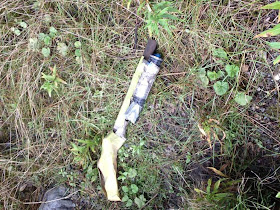Giant mammal is photographed catching a large wave off
South Africa; a reminder that dolphins aren't the only cetaceans that
like to surf
Southern right whale catches a wave off South Africa
A photo showing a southern right whale riding a large wave off South
Africa this week is further evidence that bottlenose dolphins are not
the only cetaceans that like to surf.
The image, which also shows a portion of shadow indicating the whale’s calf to her right, was captured this week by
African Wings, a company that offers whale watching and sightseeing from the air.
The site was Walker Bay, and African Wings
stated on its Facebook page
Wednesday that southern right whales often approach very close to the
surf zone. But large whales in general are rarely photographed surfing.
“Despite this being a relatively common occurrence we have had no
incidences of a live whale stranding in Walker Bay, to the best of my
knowledge,” reads the Facebook post.

Orca catches a wave off New Zealand
Apparently, the whales can sense when larger swells are about to develop, and react accordingly to avoid being caught inside.
African Wings continued: “A few years ago we were circling over a
mother and calf that were lying just outside the breakers when they
suddenly put on a burst of speed swimming straight out to sea. A few
minutes later a freak wave broke about 50 meters outside of where they
had been lying.
“I am of the opinion that somehow she could sense the wave approaching as they very rarely move so suddenly and rapidly.”
It’s not clear how large the wave in the photo is, but adult right whales measure about 60 feet, so the surf was definitely up.

Humpback whales catch a large set wave at Banzai Pipeline in Hawaii
And while researchers cannot state as fact that whales, same as
dolphins, actually “like” to ride waves, they cannot come up with a
better explanation as to why they sometimes ride them.
The larger cetaceans do not take to the waves as frequently as
dolphins, of course, and footage of large whales riding waves is scarce.
But the African Wings image brings to mind two fairly recent examples.
One involves surfing killer whales, or orcas, photographed in 2010 Sandy Bay, New Zealand, by Michael Cunningham of the Northern Advocate (second photo).
“They knew what they were doing,” Cunningham told the newspaper.
“They looked like they’d done it before.” Cunningham had been
bodysurfing when the orcas appeared, but quickly swam ashore to grab his
camera.
The other involves two large humpback whales photographed riding waves at iconic Banzai Pipeline in Hawaii last December, by J.T. Gray of North Shore Surf Photos (third photo).

Bottlenose dolphin performs an aerial before an astonished surfer in Australia
“The whales were 75 to 100 yards east of Pipeline and playing for a
while, then swam to about 10 yards outside of the lineup,” Gray said. “A
set came in and the bodyboarder caught the first wave, and the
humpbacks caught the second.”
Gray added, “Whales frequent Hawaii in the winter months, but never that close to shore.”
Of course the cetacean wave-riding masters are the sleeker, smaller
bottlenose dolphins, and perhaps no image illustrates that better than
one captured last September by
Matt Hutton in Australia.
It showed a dolphin launching high out of the face of a wave in front of an astonished surfer (bottom photo).
“The surfer’s name is Trent Sherborne and, yes, he was a lucky surfer to not only ride one wave, but two with these dolphins,” Hutton
said. “I was watching for about two hours and he was the only one I saw who managed to get a nice wave with the dolphins breaching.”
Sherborne later commented on Hutton’s Facebook page: “Mate, that’s a
sick shot and it’s me on that wave with the dolphin! I remember that
wave clearly–obviously you don’t get to eyeball a dolphin like that
every day!”

































